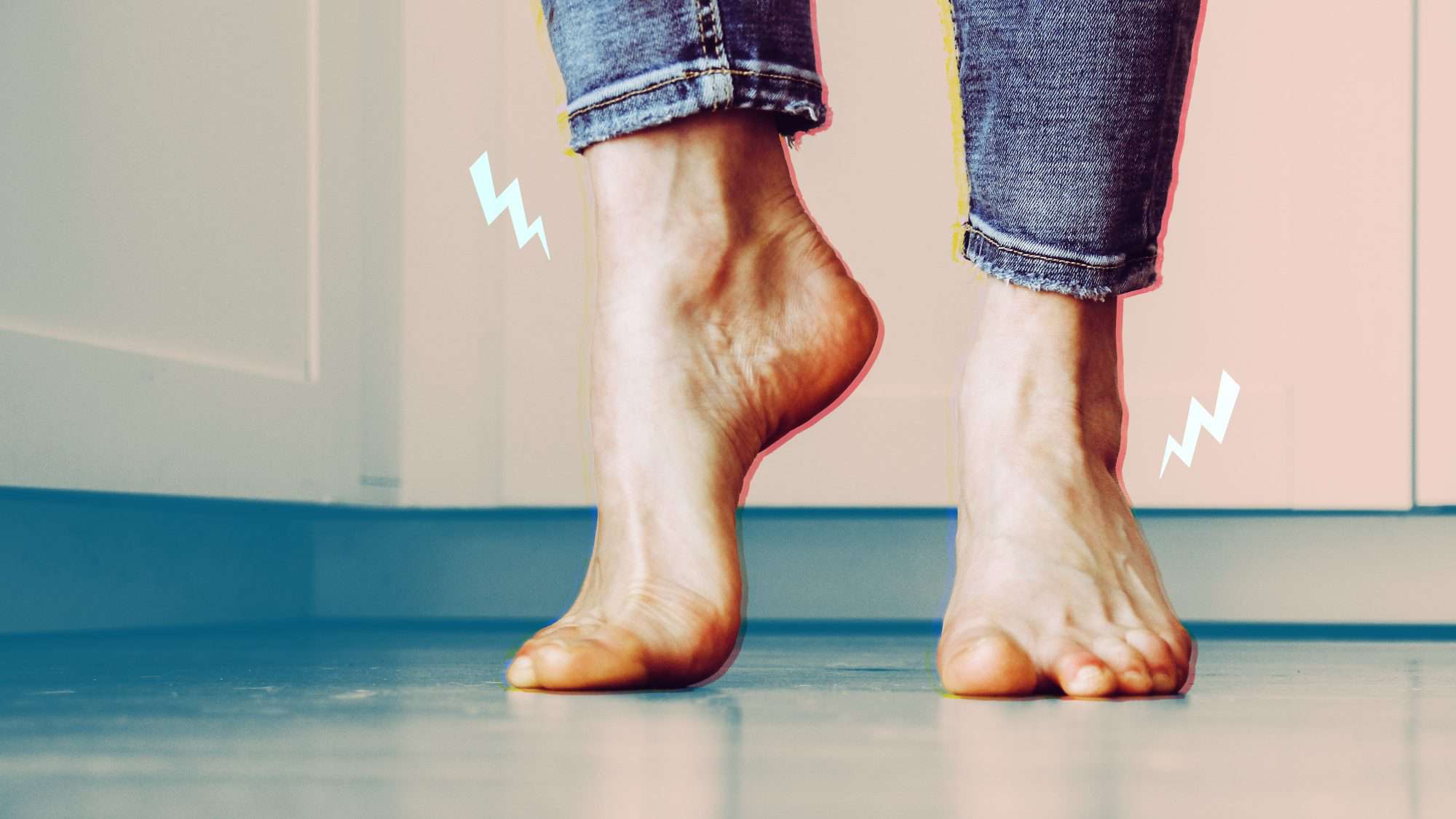There are numerous modes of treatment for foot drop, such that surgery is usually left as the last option. Other modes of recovery are usually recommended by doctors before surgery is even considered.
Curious about how to recover from foot drop without surgery? Many forms of physical therapy exercise, coupled with the use of either an ankle-foot brace or electrical stimulation, have let many people recover from foot mostly following neurological trauma.
How to Manage Foot Drop Without Resorting to Surgery
Foot drop is an infuriating health issue that interferes with one’s ability to bend the foot backward toward the shin, otherwise known as dorsiflexion. This usually occurs after nerve damage or neurological disorders disrupt the effective transmission of messages between your brain and the specific ankle muscles.
Although surgery might be an option in some cases, as a rule, doctors encourage every available option for treating foot drop before considering that avenue. This is simply because surgeries can be invasive and expensive. In contrast, the alternative ways may be just as effective, if not more so.
These non-invasive foot drop treatments aim to re-establish the lines of communication between your brain and the muscles responsible for orchestrating ankle dorsiflexion. Suppose the foot drop is due to a stroke, traumatic brain injury, or even spinal cord trauma. In that case, therapists may focus on triggering neuroplasticity that will repair the torn line of communication.
Neuroplasticity and Foot Drop
Neuroplasticity is an incredible process whereby the brain and spinal cord can adapt and reorganize themselves. This may enable an intact part of one’s brain or spinal cord to take over the functions affected by neurological damage.
Since neuroplasticity gets triggered with repetitive drills, it is possible that conducting therapeutic exercises and tasks regularly can activate neuroplasticity, hence speeding up the recovery process.
The ideal course to treat the foot drop is the treatment of the underlying neurologic insult. Nevertheless, it is possible to manage the foot drop through compensatory strategies such as using ankle-foot orthotics. These techniques may offer symptomatic improvement temporarily by preventing drooping of the foot but do not assist in long-term recovery.

When Should Surgery for Foot Drop be Considered?
Medical experts may suggest you consult surgery if conservative treatments do not help manage foot drop. While this should be your last option, you will be delighted to discover that surgical interventions have been gratifying to most individuals, approximately 94%.
There are a few surgical ways to correct foot drop. If the physician knows what root nerve damage is causing the foot drop, he or she may recommend surgery to decompress, repair, or reconstruct that nerve. These operations restore the broken connections in the neuromotor pathway.
It controls the dorsiflexion of the ankle, allowing the brain to send specific orders to the ankle muscles. If there’s no identifiable peripheral nerve damage and if the patient has had a foot drop for more than a year, then the course of action to take would be tendon transfer.
This particular surgery involved taking a working leg tendon, such as the tibialis posterior, and attaching it elsewhere in the leg to accomplish dorsiflexion. While surgeries of the nerves address the root cause of the foot drop, tendon transfer surgeries have been primarily aimed at restoring mobility in the ankle.
If you have had a stroke, traumatic brain injury, or other neurological injuries, your medical professional may discuss surgical options if your foot drop has not shown any improvement after a year of treatment. Since foot drop surgery is invasive and permanent, conservative options should be exercised first.

Other Options for Foot Drop Cure
Believe it or not, one can also regain their ankles’ mobility without going under the knife, but it takes a lot of time and effort. Therefore, for at least one year, many recommend committing to therapeutic exercises regularly before opting for a surgical way out for foot drop.
Following are some of the common therapies worth giving a try before opting for surgeries for foot drop:
Ankle Foot Orthotics (Braces)
Foot drop can cause one to stumble or fall because there is no typical foot rise. It is highly recommended that a person with foot drop consider using an AFO ankle-foot orthotic for safety. Consider this as support for the foot and ankle.
An extremely good example of an AFO is the Flex AFO by Flint Rehab. It can offer control in keeping the foot and ankle from excessive movements; it stabilizes your ankle and prevents your toes from catching on the floor.
While AFOs can greatly improve your safety and how you walk, they are still more of a supporting device. This is because, upon wearing an AFO, the nerves and muscles responsible for lifting your foot’s frontal portion do not get to work, meaning that wearing one does not quite promote healing either.
Considering AFOs as a supportive measure, they don’t motivate the active use of the weakened foot and ankle muscles. Over time, this may lead to “learned nonuse,” where your muscles get so little exercise they gradually deteriorate until they cannot be used anymore.
There is a time and a place for AFOs, however. Particularly if suggested by a qualified therapist, an AFO can and should be used in daily life to make the experience safer.
Electrical Stimulation for Foot Drop
Improvement from foot drop can be very slow, and specific exercises may accelerate this process. Many people find that linking these exercises with electrical stimulation, or e-stim, yields even better results.
In simpler terms, e-stim is a technique whereby you use small amounts of electricity on certain muscles via pads attached to the skin. These energy shocks can sometimes begin moving those muscles involved in foot drop again. This is attributed to a phenomenon known as neuroplasticity.
But remember, e-stim is best when applied with regular foot drop exercises and not in place of them. Also, one must be very cautious while using it on the parts of the body where touch sensation is not good, as it may lead to burns. You definitely need to go to a therapist and consult before beginning the use of e-stim. They can guide you through using it in a proper way and one that would be helpful for your recovery.
Exercise
The most effective natural treatment for foot drop is to revitalize the neural pathway responsible for firing the contraction of muscles responsible for foot dorsiflexion. Exercising foot drop could stimulate neuroplasticity to reroute the brain and spinal cord to send clear signals to the ankle muscles.
The exercises for foot drop consist of activities like toe taps and assisted toe lifts that teach the brain how to lift up the front part of the foot. The more these exercises are repeated, the greater the likelihood of improvement in dorsiflexion.
Why is that so? Repeating foot drop exercises strengthens the newly formed neural pathways that regulate dorsiflexion. Hence, foot drop exercises become the safest, most non-intrusive, and most potent way to mend foot drop.
Is There a Non-Surgical Cure for Foot Drop?
Foot drop is a problem where individuals cannot easily lift the front part of their foot because there has been some kind of disruption in communication between the brain and a specific group of ankle muscles. One of the best remedies to the foot drop problem is regular exercises targeting those particular ankle muscles.
When done with faithfulness and continuity, these sets of exercises can enable the brain to start talking better with your muscles, hence improving locomotion. Other modes of treatment may be incorporated in addition to the exercises to complement the outcome.
Techniques such as e-stim can be brought to bear, thus enhancing nerve and muscle function and helping mobility, whereas using AFOs contributes to the stability of the ankle and safety during locomotion. Surgery-related options, including nerve repairs or tendon transfers, are usually pursued only when other potential treatments have been ineffective.
Physical Therapy
Treatments for foot drop are highly physical in nature and are done in a structured, step-by-step process. Therapists, therefore, work closely with patients in devising individualized exercise regimens that hone strength, flexibility, and coordination.
They then focus on the exercises that would enhance the muscles responsible for the action of dorsiflexion; with time, this would help the patient regain control of his movements. Other than exercises, physical therapists also use other modalities, such as massage and stretching, to enhance blood flow and limit stiffness in the affected area.
Gait training enables therapists to make patients practice the right way of walking. This is highly useful in preventing further complications of imbalance or injury. Regular sessions with a physical therapist accelerate recovery and teach patients how to maintain such improvement by guiding them on posture and movement applicable during daily activities.
Conclusion
Whereas surgery may be considered in the event of failure of other treatments, it is important to remember that non-surgical treatments can result in dramatic improvement in most patients with foot drop. A combined therapy may bring noticeable functional recovery.

